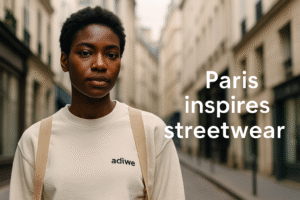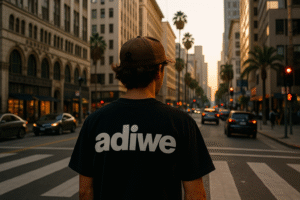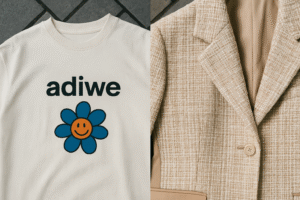Launching your first streetwear line is thrilling, but figuring out the budget can be a real headache. Without a clear financial plan, you risk overspending or falling short on crucial elements.
Budgeting for your first custom streetwear collection involves meticulously calculating design, sampling, production, marketing, and contingency costs. Prioritize quality materials and reliable manufacturing while setting realistic sales goals to guide your spending.
Setting a realistic budget is one of the most critical first steps, and honestly, it's where I see many new brands stumble. As someone running Adiwe, a factory in China specializing in B2B wholesale of top-quality, customizable streetwear like t-shirts and hoodies, I've worked with countless startups and established trend brands. I remember a client, let's call him "Alex," who had amazing designs but completely underestimated production costs for his first run of complex hoodies. He ended up having to scale back his vision significantly. This is a common story. My goal here is to help you avoid that, drawing from my experience seeing brands from North America, England, and France navigate these early financial waters. Let's break down how to approach this so your creative vision can actually come to life.
What Are the Core Costs in Custom Streetwear Production?
Feeling lost about what expenses to even list for production? It's easy to miss something vital. Overlooking key costs here can really hurt your launch before it even begins.
Core production costs for custom streetwear include design development and tech packs, material sourcing (fabric, trims), sample creation, bulk manufacturing per unit, quality control, and packaging.
!
Nailing down your production costs is fundamental. This is the money that directly goes into creating the physical products you'll sell. When clients like Fifty Fifty from England come to us for their hoodies, they are very focused on design and quality, but also competitive pricing. They know that the style of their clothing is relatively complex and requires a lot of craftsmanship. This complexity directly impacts production costs. At Adiwe, with our five production lines, we focus on top quality and personalized design, offering customizable fabrics, craftsmanship, logos, and accessories. We help brands understand how these choices influence the final price per unit. Let's look at the typical breakdown.
Diving Deeper into Production Cost Components
Each element of production carries its own cost, and understanding these helps you make informed decisions.
| Production Element | Description | Estimated Cost Factor | Adiwe's Approach |
|---|---|---|---|
| Design & Tech Packs | Creating detailed blueprints for your garments. | Low to Moderate | We can work from detailed tech packs or help refine concepts for manufacturability. |
| Material Sourcing | Cost of fabrics, threads, zippers, buttons, labels, etc. | Moderate to High | We offer customizable fabrics and source top-quality materials based on client specifications and budget. |
| Sampling | Creating initial prototypes to approve design, fit, and quality. | Moderate | Essential for complex designs; we ensure samples match the vision before bulk production. |
| Bulk Manufacturing | Per-unit cost of producing the entire collection. MOQs play a big role. | High | Our factory status allows for competitive B2B wholesale pricing, especially for trendy, personalized items. |
| Quality Control (QC) | Inspecting garments to ensure they meet standards. | Low to Moderate | A key point for clients like Fifty Fifty. We have rigorous QC processes to ensure top quality. |
| Packaging | Hangtags, polybags, custom boxes (if applicable). | Low | We can incorporate custom branding into packaging elements. |
For example, if you're planning a line of t-shirts, the fabric choice (e.g., organic cotton vs. standard cotton) will significantly impact material cost. If you want intricate embroidery for your logo, that's more expensive than a simple screen print. Sampling is crucial. You might need a couple of rounds of samples, especially if your designs are innovative or use unique construction techniques. We always advise clients to budget for at least two sample iterations. With clear tech packs, this process can be smoother, reducing the need for multiple, costly revisions. The Minimum Order Quantity (MOQ) set by the manufacturer will also heavily influence your upfront investment for bulk production; a lower MOQ might mean a higher per-unit cost.
How Much Should You Allocate for Marketing and Branding Your New Collection?
Have you designed amazing products but are worried no one will see them? Marketing can feel like throwing money into a void. Without a dedicated budget, your collection might never find its audience.
Allocate a significant portion, typically 15-30% of your total initial budget, for marketing and branding. This covers creating your brand identity, content, online presence, and promotional activities.
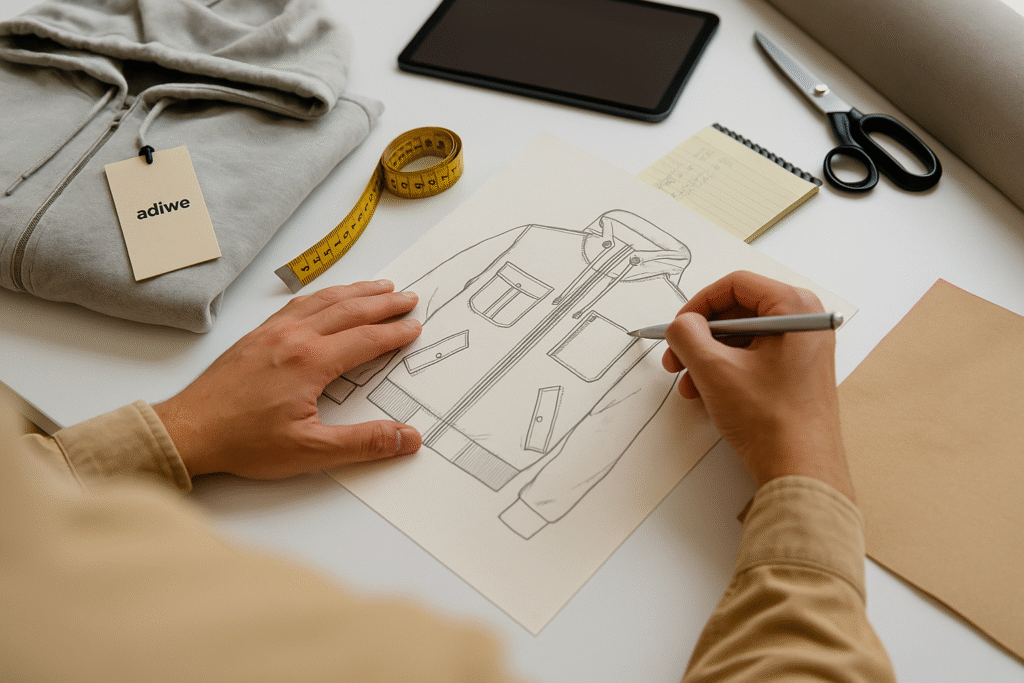
Once your collection is in production, or even before, you need to think about how you're going to tell the world about it. From my experience, new streetwear brands, especially those targeting young, trend-conscious consumers, need strong marketing from day one. It's not just about having great products; it's about building a brand story and connecting with your target audience. Possible clients for us at Adiwe, like KOLs and trend brands, understand this very well. They know that the "very trendy" aspect of their clothing needs to be communicated effectively. While our B2B promotion channels are Alibaba, exhibitions, and Google, a B2C streetwear brand will focus on different avenues.
Diving Deeper into Marketing and Branding Expenses
Your marketing budget needs to cover various activities to build awareness and drive sales.
| Marketing Activity | Description | Budget Allocation (Guideline) | Notes for Streetwear Brands |
|---|---|---|---|
| Brand Identity | Logo design, brand guidelines, website/e-commerce setup. | 5-10% | Essential first step. Your brand's look and feel sets the tone. |
| Content Creation | Product photography, lifestyle shoots, videos. | 20-30% | High-quality visuals are non-negotiable for fashion. Show your products in action. |
| Social Media Marketing | Organic posting, community management, paid advertising (e.g., Instagram). | 20-30% | Where your target audience lives. Consistency is key. Consider ads for broader reach. |
| Influencer/KOL Collabs | Partnering with relevant influencers to promote your collection. | 10-25% | Can be very effective for reaching niche audiences. Research influencers carefully. |
| Public Relations (PR) | Outreach to media, bloggers (optional for initial launch). | 0-10% | Can build credibility but might be a later-stage investment. |
| Launch Event/Pop-Up | Physical or online event to create buzz (optional). | 0-15% | Great for engagement but requires significant planning and budget. |
I always tell new brands to prioritize high-quality photography and a solid social media presence. For streetwear, Instagram, TikTok, and even platforms like Pinterest can be incredibly powerful. Think about the "look and feel" you want to project. Is it gritty and urban, or more minimalist and clean? Your marketing materials should reflect that. For example, a client focusing on personalized design and unique craftsmanship, like those we serve from North America or France, would want their marketing to highlight these unique selling points. Don't forget the power of storytelling – what's the inspiration behind your collection? Share it.
Are There Hidden Costs or Contingencies to Plan For?
Think you've listed every possible expense for your new streetwear line? Unfortunately, unexpected costs can pop up and quickly derail your budget. Being unprepared for these can be a serious blow.
Yes, always include a contingency fund, typically 10-20% of your total calculated budget. This buffer is for unforeseen expenses like shipping fluctuations, customs duties, or minor production adjustments.

This is an area where I've seen even experienced business owners get caught out. No matter how carefully you plan, something unexpected will likely happen. It could be a sudden increase in shipping costs, a delay at customs, or the need for a slight design modification after the first samples. Clients like Fifty Fifty, who source from developing countries like China, are aware that logistics can sometimes present challenges. Having a contingency fund isn't about expecting failure; it's about smart planning and giving yourself a safety net. For a new brand, this buffer is even more critical because you're still learning the ropes.
Diving Deeper into Potential Unexpected Expenses
Being aware of potential hidden costs allows you to better prepare your contingency fund.
| Potential Hidden Cost | Description & Impact | Mitigation/Planning Strategy |
|---|---|---|
| Shipping & Freight | Costs can fluctuate based on fuel prices, demand, and shipping method. Delays can occur. | Get multiple quotes, understand incoterms. Factor in potential delays. We at Adiwe help clients navigate logistics. |
| Customs & Import Duties | Taxes and fees levied by the importing country. These vary widely. | Research duties for your target markets (e.g., North America, England, French). Consult a customs broker if needed. |
| Payment Processing Fees | Fees charged by payment gateways for online sales (e.g., Shopify Payments, PayPal). | Factor these into your pricing structure. Usually a percentage of each sale. |
| Returns & Exchanges | Costs associated with handling customer returns or exchanges (shipping, restocking). | Have a clear return policy. Quality control can minimize returns due to defects. |
| Currency Fluctuations | If paying suppliers in a different currency, exchange rates can change. | Consider hedging strategies for very large orders, or discuss fixed pricing terms with suppliers. |
| Re-sampling/Corrections | If initial samples require significant changes, additional sample costs will incur. | Provide very clear tech packs. Work with experienced manufacturers like Adiwe who focus on getting it right. |
| Bank Transfer Fees | Fees for international wire transfers to suppliers. | Understand your bank's fee structure. Sometimes services like Wise can offer lower fees. |
As a factory owner in China, I'm very familiar with the intricacies of international shipping and payments. For example, when we export to our main markets in North America or Europe, the shipping costs and customs procedures are things we discuss upfront with our clients. If a brand is launching with a complex hoodie design, like those favored by Fifty Fifty, and a minor detail needs adjustment after the first sample, that's an additional cost. The contingency fund is there to absorb these kinds of things without derailing your entire project. It allows you to maintain your commitment to top quality and personalized design, even when small bumps appear in the road.
How Do Minimum Order Quantities (MOQs) Affect Your Budget?
Are you concerned about meeting the Minimum Order Quantities set by manufacturers? MOQs can seem like a big financial hurdle for new streetwear brands. Miscalculating their impact can lead to dead stock or not being able to start at all.
MOQs significantly impact your upfront production investment. Higher MOQs often reduce the per-unit cost but require more initial capital. You must balance this with realistic sales projections and available cash flow.
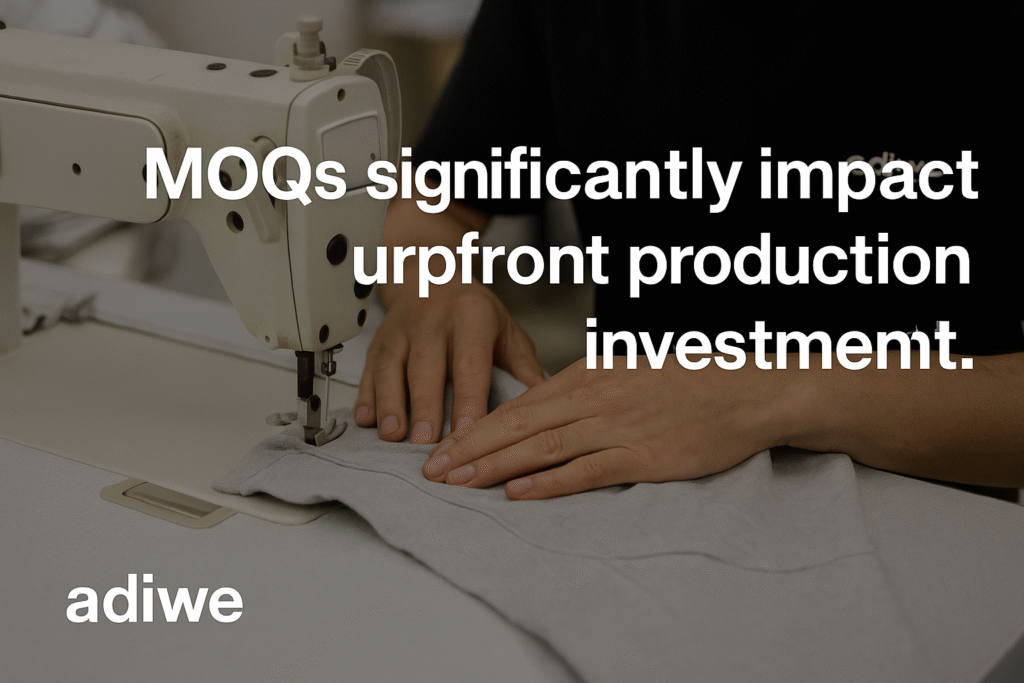
Minimum Order Quantities, or MOQs, are a standard part of dealing with manufacturers, especially when you're aiming for B2B wholesale relationships like the ones we foster at Adiwe. As a factory with 5 production lines, setting up for a particular design – whether it's a t-shirt, hoodie, or other streetwear item – involves certain fixed costs for us, regardless of whether we produce 50 pieces or 500. This is why MOQs exist; they ensure that the production run is economically viable for the manufacturer. For a new brand, understanding how MOQs affect your budget is crucial. It’s a direct trade-off: a higher quantity usually means a better price per piece, but it also means a larger total bill.
Diving Deeper into MOQs and Budgetary Implications
Navigating MOQs effectively is key to managing your startup capital for a new streetwear line.
| Aspect of MOQ | Impact on Budget & Operations | Adiwe's Perspective / How We Work |
|---|---|---|
| Upfront Capital Requirement | Higher MOQs mean a larger initial payment to the manufacturer. | We understand new brands might have tighter budgets and try to discuss MOQ flexibility where feasible, especially for promising clients. |
| Per-Unit Cost | Generally, the higher the MOQ, the lower the per-unit cost due to economies of scale. | Our B2B wholesale model is built on this. We can offer more competitive pricing for larger orders of customizable fabrics, logos, and accessories. |
| Inventory Risk | Ordering a large quantity based on MOQ can lead to excess inventory if sales are slow. | We advise clients to start with realistic quantities, even if it means a slightly higher per-unit cost, to test the market for their very trendy items. |
| Design Complexity | More complex designs or those requiring specialized materials might have higher MOQs. | For intricate craftsmanship or personalized designs, like the complex hoodies Fifty Fifty orders, the setup might necessitate a certain volume. |
| Supplier Relationship | Meeting MOQs is often a prerequisite for building a relationship with a quality manufacturer. | As a factory, consistent orders that meet our production capabilities help us build long-term partnerships with clothing brands and KOLs. |
I often see new brand owners tempted by the lowest per-unit price, which usually comes with a very high MOQ. However, if you haven't validated your designs in the market yet, this can be risky. You might end up with a lot of capital tied up in stock that doesn't sell as quickly as you hoped. My advice, especially for your first collection, is to have an honest conversation with your manufacturer. Explain your situation. Sometimes, there might be flexibility, or perhaps you can start with a slightly smaller run for key pieces. At Adiwe, while we are a wholesale factory, we value building relationships. If a new trend brand from, say, France, has a brilliant concept but needs to start a bit smaller, we're open to discussing options, particularly if their designs are innovative and align with our focus on top quality and very trendy apparel.
Conclusion
Budgeting for your first custom streetwear line requires diligent planning of production, marketing, and unexpected costs. Thoroughness here paves the way for a successful and sustainable brand launch.

